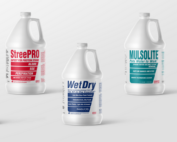
Pressing Matters: Inside Look at the Drycleaning Process
The standard drycleaning process has revolutionized the textile care industry, allowing for consistent and high-quality results. This process gained traction following advancements in technology that allowed key elements to be monitored, controlled, and maintained, leading to more effective cleaning with less effort.
Despite variations emerging over time, the standard drycleaning process remains unmatched in quality. This article aims to delve deep into each phase, starting with an overview of the cleaning cycle’s three integral parts:
Good quality drycleaning is dependent on optimal performance in each of these cycles.
- The Cleaning Cycle
- The Drain/Extract Cycle
- The Drying/Recovery Cycle.
Part One: The Cleaning Cycle
The starting point for the Standard Drycleaning process is to remove the Insoluble and Solvent-Soluble Soil by lifting the insoluble and solvent-soluble soils off the garments and into the solvent nearest to the garments (Load Bound Solvent). Most of this occurs during the first minute of the cleaning cycle.
CHOICES THAT CAN CAUSE POOR RESULTS:
- Incorrect type or insufficient detergent concentration
- Does not cause soil to be released from the garments.
- Allows free soil to redeposit on the garments.
- Soil present in the solvent during the initial filling of the drum
- More difficult to hold additional soil.
- More soil available for possible redeposition.
- Solvent level too low
- Less solvent available to hold soil.
- Overloading the Drum
- Less free solvent for soil to move into
- Less mechanical action to aid in soil removal.
Part Two: Remove the Dirty Solvent
The second part of The Standard Drycleaning Cycle is to move the dirty solvent (insoluble soils) out of the wheel by moving it first from between the garments (Load Bound solvent) to the area surrounding the garments (Bulk Solvent), and then out of the wheel and to the filter.
This part of the cleaning cycle involves an ongoing process of replacing by dilution, the dirty solvent with clean soil-free filtered solvent. This is the part of the cleaning cycle that takes the most time.
In fact, an experiment was done by taking only the soil from a normal load and running it in a cleaning machine with no garments present. It took anywhere from 6-9 minutes just to replace the dirty solvent with clean solvent, with no garments in the way!
Now, when you take the time necessary for step #1, and the fact that garments are also in the wheel, lab tests confirm that ....
IT TAKES A MINIMUM OF 12 MINUTES TO REMOVE THE DIRTY SOLVENT FROM THE SYSTEM!
CHOICES THAT CAN CAUSE POOR RESULTS:
- Incorrect type or insufficient detergent concentration
- Does not cause soil to be released from the garments.
- More difficult to hold additional soil in suspension.
- More soil available for possible redeposition
- Solvent level too low
- Less solvent available to hold soil.
- Not enough to have a good solvent flow
- Insufficient flow of solvent
- Cannot move soil away from garment to the Bulk Solvent
- Overloading the drum
- More difficult for dirty Load Bound Solvent to get to the Bulk Solvent
- Reduced mechanical action.
Part Three: Remove the Water-Soluble Soils from the Garments.
Since water-soluble soil removal does not begin to occur until well into the cleaning cycle (8 minutes into the wash cycle), removal of an acceptable amount of water-soluble soil takes the full cleaning cycle of at least 12 minutes. Anything less would run the risk of poor water-soluble soil removal.
CHOICES THAT CAN CAUSE POOR RESULTS:
- Insufficient amount of moisture present in the system
- Water is needed to remove water-soluble soil.
- Incorrect type or insufficient detergent concentration
- Will not allow the water present in the system to work effectively.
- Cleaning cycle cut too short (less than 12 min.)
- Not enough time for water-soluble soil removal to occur.
- Overloading the drum
- Reduced mechanical action.
Part Four: The Drain and Extract Cycle
The objective of this cycle is to get the solvent out of the wheel, and out of the fabrics before the Drying/Recovery cycle begins.
Choices That Can Cause Poor Results:
- Soil that is still present in the solvent.
- Garments will now act as the filter medium.
- Insufficient Extract Time
- Results in too much solvent and possibly too much NVR left in the garments.
- Extends the amount of time needed to dry the garments.
- Over Extended Extract Time
- Too little of the good NVR is left in the garments.
*NVR consists of dissolved substances in the solvent*
Good NVR consists of Detergent and Fabric Finishes.
Bad NVR comes from Dyes, Oils and Greases that have been removed from garments during the cleaning cycle and remain in the solvent until distillation.






